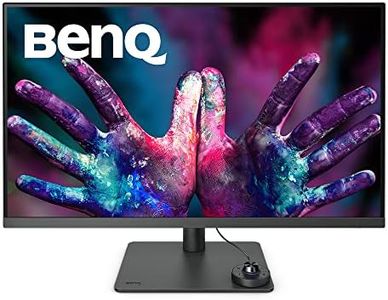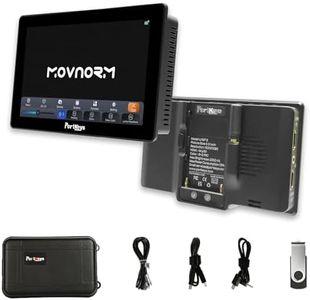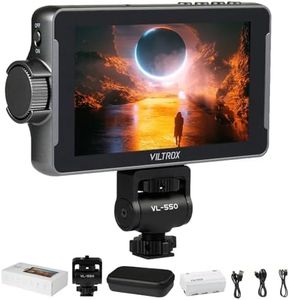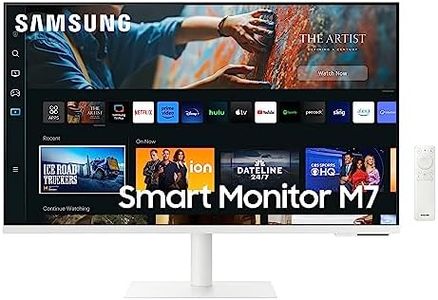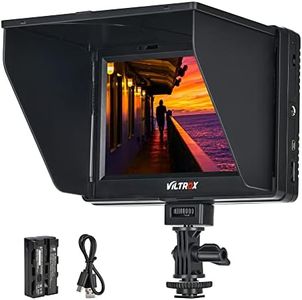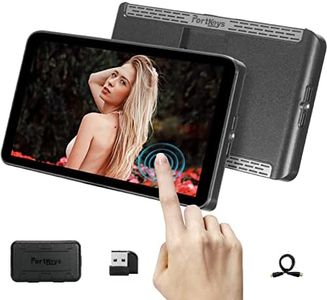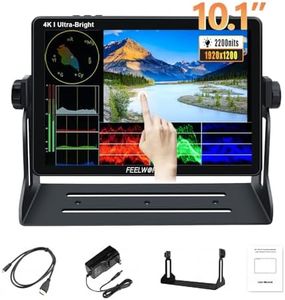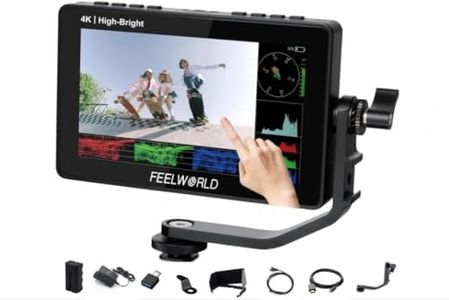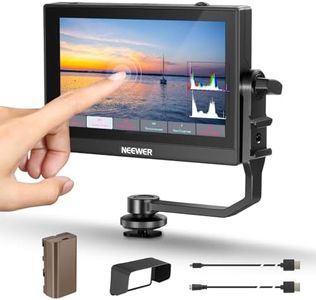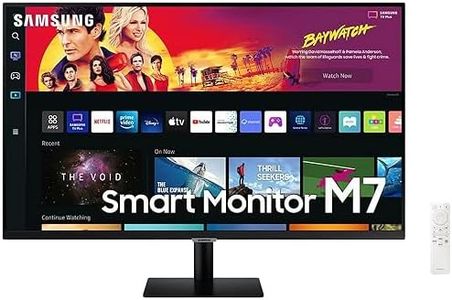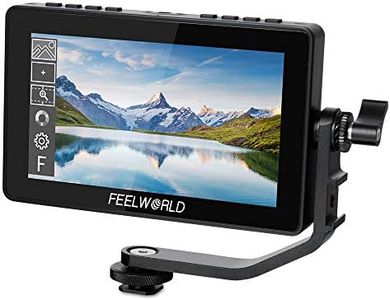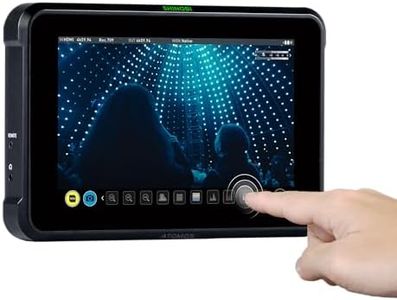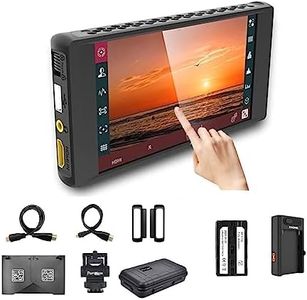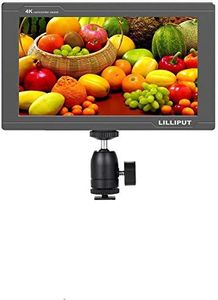We Use CookiesWe use cookies to enhance the security, performance,
functionality and for analytical and promotional activities. By continuing to browse this site you
are agreeing to our privacy policy
10 Best Camera Monitors
From leading brands and best sellers available on the web.Buying Guide for the Best Camera Monitors
Choosing the right camera monitor can make a huge difference in your photography or videography experience. A camera monitor is an external display you attach to your camera so you can see your images or videos more clearly and with more information than what the built-in camera screen offers. The key to picking the best one for you is to match the monitor’s features to your shooting needs and personal preferences. Think about where and how you'll use it—indoors, outdoors, studio setups, or on the move—and focus on the specs that will improve your workflow and comfort.Screen SizeScreen size means how big the display is, usually measured diagonally in inches. This is important because a larger screen can make it easier to see details and compose shots, but bigger screens are also heavier and bulkier. Smaller monitors (5-6 inches) are great for portability and handheld setups, while larger ones (7 inches or more) are better for studio use or when you need to share the screen with others. If you shoot a lot on the go or with a compact rig, a smaller screen is practical. For studio use or more careful review of footage, a larger screen is more comfortable.
ResolutionResolution refers to how many pixels are on the screen, and it affects how sharp and detailed the image looks. Common values range from 720p (HD) to 1080p (Full HD) or even higher. Higher resolution gives you a clearer view, helping you notice fine details and focus more accurately. For most basic work or as a framing tool, 720p is sufficient, but for precise focusing or color-critical work, go for 1080p or higher. Choose the resolution based on how much detail you need to see in your work.
BrightnessBrightness is how much light the monitor emits, usually measured in nits. This is crucial if you'll be shooting outdoors or in bright environments, as low brightness can make the screen hard to see. Monitors with lower brightness (around 400-500 nits) work well indoors, while those with 1000 nits or more are considered sunlight readable and are better for outdoor use. Consider your typical shooting location: opt for a brighter screen if you often work outside or in strong light.
Input TypesInput types refer to how the monitor connects to your camera, commonly through HDMI or SDI ports. HDMI is the most common for consumer and prosumer cameras, while SDI is used in higher-end, professional setups for extra durability and longer cable runs. Make sure the monitor you choose matches the output ports on your camera. If you only have HDMI on your camera, you don't need an SDI monitor, but if you're working on larger productions or broadcast environments, having SDI can be essential.
Power OptionsPower options are about how the monitor gets its energy – either from batteries or plugged into the wall (AC power). Some monitors use the same batteries as popular camera brands, making it easier to swap batteries in the field, while others might use their own unique batteries or support external power from V-mount or Gold mount systems. If you shoot mostly outdoors or away from power sources, look for monitors with good battery support and easy swaps. For studio shooters, AC power might be sufficient.
Color AccuracyColor accuracy means how well the monitor displays colors as they really are. Monitors with better color accuracy let you judge exposure, white balance, and color in your footage more reliably. Some monitors have basic color output, while others are factory-calibrated or support calibration tools. If your work involves color grading or you need precise color judgment, prioritize color accuracy. For casual or basic use, this is less critical.
Touchscreen and ControlsSome monitors include touchscreen controls, letting you navigate menus and adjust settings with taps and swipes, while others use physical buttons. Touchscreens are usually more intuitive and quicker to use, especially for changing settings on the fly. If you prefer a familiar smartphone-like interaction, a touchscreen could be helpful. For those who work in challenging conditions (like with gloves), physical buttons may be more reliable.
Assist FeaturesAssist features include tools like focus peaking, false color, zebras, waveform displays, and LUT support. These tools help you monitor focus, exposure, and color while you shoot. Entry-level monitors may offer just a few, while advanced models have a full suite. If you need help with exposure or focusing, prioritize monitors with these features. For basic monitoring needs, fewer assist functions may be enough.
